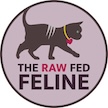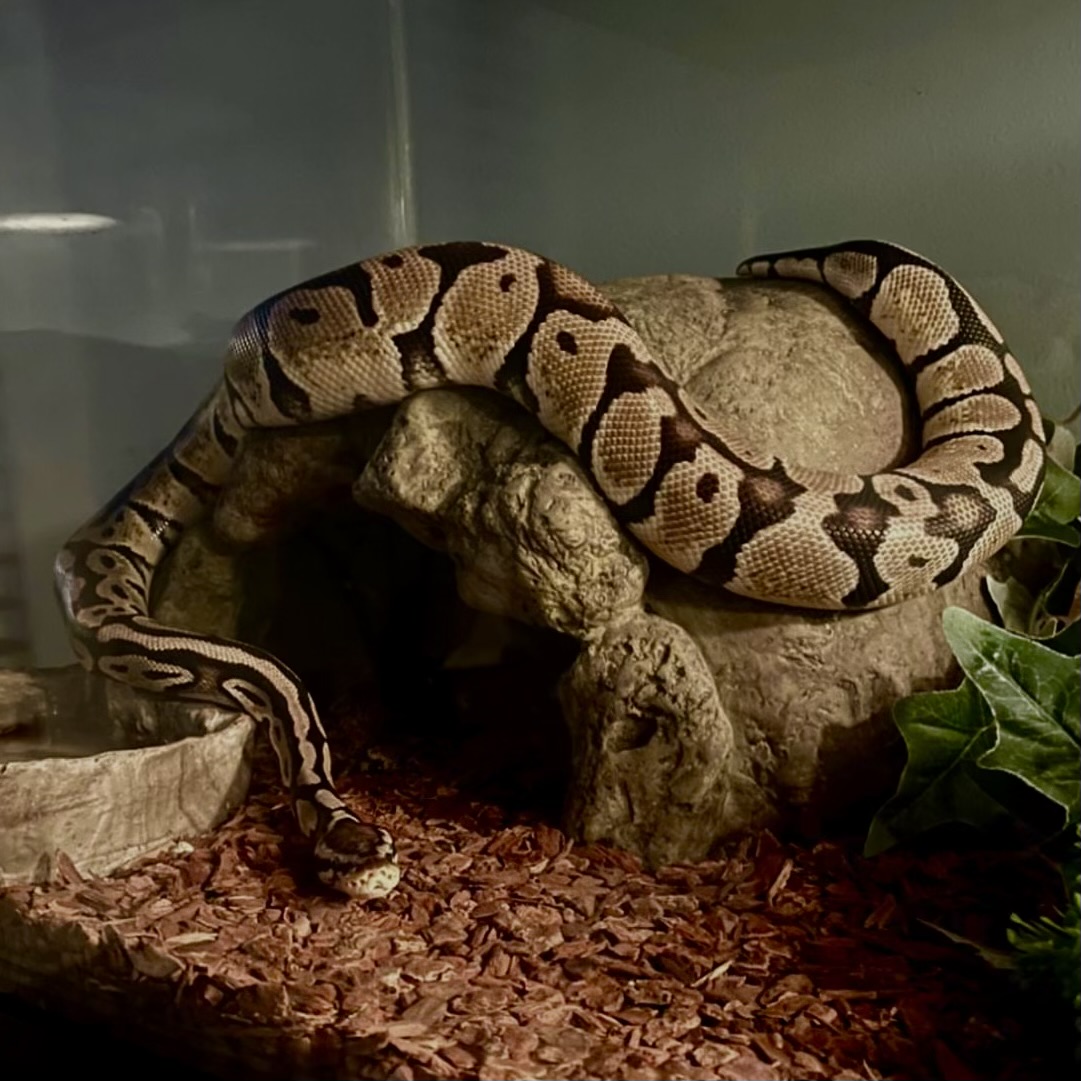I want to talk about cats’ adaptability when it comes to diet. We might not always think of cats as being particularly adaptable since cats are cautious when it comes to new foods, but there is a larger adaptability that cats possess. And sadly, it works against them when it comes to diet.
I’m going to start with snakes, so please bear with me. At first glance, cats and snakes may not seem to have much in common. They are completely different species after all. However, there is an important thing that they share: their natural diets. Cats and snakes eat whole prey. Both species provide excellent rodent control in their respective environments.
What snakes and cats eat
Ask any reptile enthusiast what their snake eats, and the answer is whole prey. There is no other option. There is no moisture depleted, carbohydrate laden dry kibble that has been formulated to meet the nutritional needs of snakes available. It is seems silly to even imagine it.
Snakes, given how they strike and/or constrict their prey, and because of their anatomy, do not have the physical capability to eat little balls of dry kibble. They would eventually starve and die without the species appropriate food they are designed to eat. They cannot adapt to eating other forms of food.
No one gives a second thought to snakes eating whole prey. It’s what they must eat. Period.

Cats’ adaptability
What about cats? Why is it considered so strange and cruel to feed frozen thawed whole prey to cats then? After all, it is what they naturally eat, just like snakes do.
I think this is where cats’ adaptability works against them. Cats can eat moisture depleted, carbohydrate laden dry kibble that has been formulated to meet their nutritional needs and still survive. However, I would argue that we should stop asking this of our cats.
We have all had cats that ate nothing but dry food and still had a reasonable lifespan. Cats’ natural diet of whole prey has around 70-80% moisture and practically no carbohydrates. Dry food has 10-12% moisture and upwards of 30-55% carbohydrates! Cats are able to eat dry food that is as far away from what they are designed to eat as is possible, and yet survive. This is cats’ adaptability in action.

survive vs thrive
So, yes, our cats can survive eating food that is the opposite of their natural diet. But even if they can survive, keep in mind that they certainly cannot thrive doing so.
Cats pay a steep price for eating such an inappropriate diet. The rates of kidney disease, diabetes, urinary issues, obesity, cancer, and digestive issues have skyrocketed since the invention of dry kibble. Even if they don’t develop a formal disease, they experience chronic dehydration when eating a dry food diet. And they cannot drink enough water to compensate for the lack of moisture in dry food.
The billion dollar pet food industry has done a remarkable job convincing all of us that cats should eat their cheap, poor quality dry food. They use suggestive key words and pretty packaging, and keep it inexpensive and super convenient for us. They have done such a good job with their marketing that many people consider dry food to be the standard diet for cats. But the further the diet is from their natural diet, the greater the strain on our cats.
I realize that not everyone, or even most people, want to feed whole prey to their cats. That’s ok. You don’t have to feed whole prey to provide a species appropriate diet. But you do want to keep whole prey in mind when you select your cat’s diet. Because the further away the food is from their natural diet, the more you are asking your cat to adapt from what they are physiologically designed to eat.
Just because they can survive eating dry food, doesn’t mean that they should or that it is in their best interest. We are inadvertently taking advantage of cats’ capacity to survive eating a very species inappropriate diet.
The parameters of cats’ natural diet
Cats’ diet should consist of food that is moisture rich, high in protein, moderate in fat, and low to no carbohydrates. See this foundational study by Plantinga et al.
Dry kibble is the food that is the absolute furthest away from our cats’ natural diet. It is low in moisture, low in bioavailable protein, and has way too many carbohydrates. The less dry kibble you feed, the better for your cat. This isn’t intended to shame anyone feeding dry kibble; my hope is to raise awareness, so that you can make a better choice for your cat.
cooked/canned foods
Canned and home cooked diets can provide a diet with these essential dietary parameters: moisture rich, high in protein, moderate in fat, and low to no carbohydrates.
If you want to feed a home cooked diet, you want to account for certain nutrient and enzyme loss due to heat. You can either use a meat completer or follow an appropriately formulated recipe. This is a helpful article regarding the differences between feeding raw and cooked meat.
If you want to feed a canned food diet, there are many options available. Some canned foods can still be too low in protein, too high in fat, and/or too high in carbohydrates, so you want to learn to read canned food labels to make the best choice for your cat within your budget. The Feline Nutrition: Feed Cats Like Cats FaceBook group has an extensive canned foods list available with these values already calculated for you.
raw foods
When it comes to raw foods, you have many options to consider. This aspect of raw feeding is one that I really appreciate. Freeze dried, frozen pre-made, meat completers, formulated recipes, prey model raw, and whole prey are all ways to feed a species appropriate diet. Each of these options provides a diet that doesn’t require your cat to significantly adapt from what they are designed to eat. And the less we ask our cats to adapt when it comes to diet, the more our cats can truly thrive.

We should stop asking cats to adapt to an inappropriate diet
So, while you don’t have to feed whole prey to your cat, as people who care for snakes must, I want to encourage you to keep whole prey in mind when selecting your cat’s food. The further the diet is from their natural diet, the greater the strain on our cats. It’s not fair of us to take advantage of our cats’ adaptability.
Keep in mind what your cat is designed to eat, so that you can choose foods that support their health and vitality, not work against it, and then watch your cat thrive.


